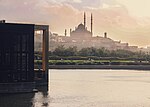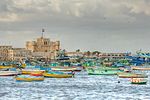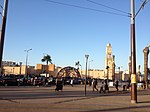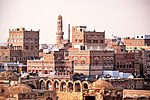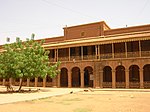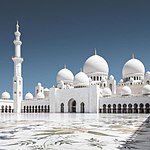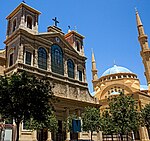
The Arabs, also known as the Arab people, are an ethnic group mainly inhabiting the Arab world in West Asia and North Africa. A significant Arab diaspora is present in various parts of the world.

Damascus is the capital of Syria, the oldest current capital in the world and, according to some, the fourth holiest city in Islam. Known colloquially in Syria as aš-Šām (الشَّام) and dubbed, poetically, the "City of Jasmine", Damascus is a major cultural center of the Levant and the Arab world.

The Arabian Peninsula, or Arabia, is a peninsula in West Asia, situated northeast of Africa on the Arabian Plate. At 3,237,500 km2 (1,250,000 sq mi), the Arabian Peninsula is the largest peninsula in the world.

Shalmaneser III was king of the Neo-Assyrian Empire from the death of his father Ashurnasirpal II in 859 BC to his own death in 824 BC.

Gordian III was Roman emperor from 238 to 244. At the age of 13, he became the youngest sole emperor of the united Roman Empire. Gordian was the son of Antonia Gordiana and Junius Balbus, who died before 238. Antonia Gordiana was the daughter of Emperor Gordian I and younger sister of Emperor Gordian II. Very little is known of his early life before his acclamation. Gordian had assumed the name of his maternal great grandfather in 238.

Latakia is the principal port city of Syria and capital city of the Latakia Governorate located on the Mediterranean coast. Historically, it has also been known as Laodicea in Syria or Laodicea ad Mare. In addition to serving as a port, the city is a significant manufacturing center for surrounding agricultural towns and villages. According to 2023 estimate, the population of the city is 709,000, its population greatly increased as a result of the ongoing Syrian Civil War, which led to an influx of internally displaced persons from rebel held areas. It is the 4th-largest city in Syria after Aleppo, Damascus, and Homs. It borders Tartus to the south, Hama to the east, and Idlib to the north, and Cape Apostolos Andreas, the north-eastern tip of Cyprus, is about 109 kilometres (68 mi) away.

Antiochian Greek Christians are an ethnoreligious Eastern Christian group native to the Levant. They are either members of the Greek Orthodox Church of Antioch or the Melkite Greek Catholic Church, and they have ancient roots in what is now Syria, Lebanon, Palestine, Jordan, the southern Turkish province of Hatay, which includes the city of Antakya —one of the holiest cities in Eastern Christianity, and Israel. Many of their descendants now live in the global Near Eastern Christian diaspora. They primarily speak Levantine Arabic, with Maaloula near Damascus being one of the few places where a Western Aramaic dialect is still spoken.
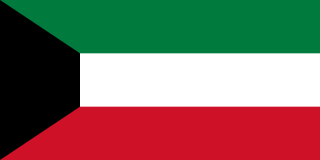
Kuwait, officially the State of Kuwait, is a country in West Asia. It is situated in the northern edge of Eastern Arabia at the tip of the Persian Gulf, bordering Iraq to the north and Saudi Arabia to the south. Kuwait also shares maritime borders with Iran. Kuwait has a coastal length of approximately 500 km (311 mi). Most of the country's population reside in the urban agglomeration of the capital and largest city Kuwait City. As of 2023, Kuwait has a population of 4.82 million people of which 1.53 million are Kuwaiti citizens while the remaining 3.29 million are foreign nationals from over 100 countries.

The Greater Cairo Region is a metropolitan area centered around Cairo, Egypt. It comprises the entirety of the Cairo Governorate, the cities of Imbaba and Giza in the Giza Governorate, and the city Shubra El Kheima in Qalyubia Governorate. Its definition can be expanded to include peri-urban areas and a number of new planned towns founded in the desert areas east and west of Cairo. The Greater Cairo Region is also officially defined as an economic region consisting of the Cairo, Giza, and Qalyubia Governorates. Within Greater Cairo lies the largest metropolitan area in Egypt, the largest urban area in Africa, the Middle East, and the Arab world, and the 6th largest metropolitan area in the world.

The Sanjak of Zor was a sanjak of the Ottoman Empire, which was created in 1857. Some of its area was separated from the Baghdad Vilayet. Zor was sometimes mentioned as being part of the Aleppo Vilayet, or of the Syria Vilayet.

The Vilayet of Syria, also known as Vilayet of Damascus, was a first-level administrative division (vilayet) of the Ottoman Empire.
The following is a timeline of the history of the city of Damascus, Syria.
The following is a timeline of the history of the city of Cairo, Egypt.
The following is a timeline of the history of the city of Aleppo, Syria.
The following is a timeline of the history of the city of Khartoum, Sudan.
The following is a timeline of the history of the city of Medina, Saudi Arabia.
The following is a timeline of the history of the city of Mecca, Saudi Arabia.
The following is a timeline of the history of Kuwait City, Al Asimah Governorate, Kuwait, and its metro surroundings.

The recorded history of the Arabs begins in the mid-9th century BCE, which is the earliest known attestation of the Old Arabic language. Tradition holds that Arabs descend from Ishmael, the son of Abraham. The Syrian Desert is the home of the first attested "Arab" groups, as well other Arab groups that spread in the land and existed for millennia.
